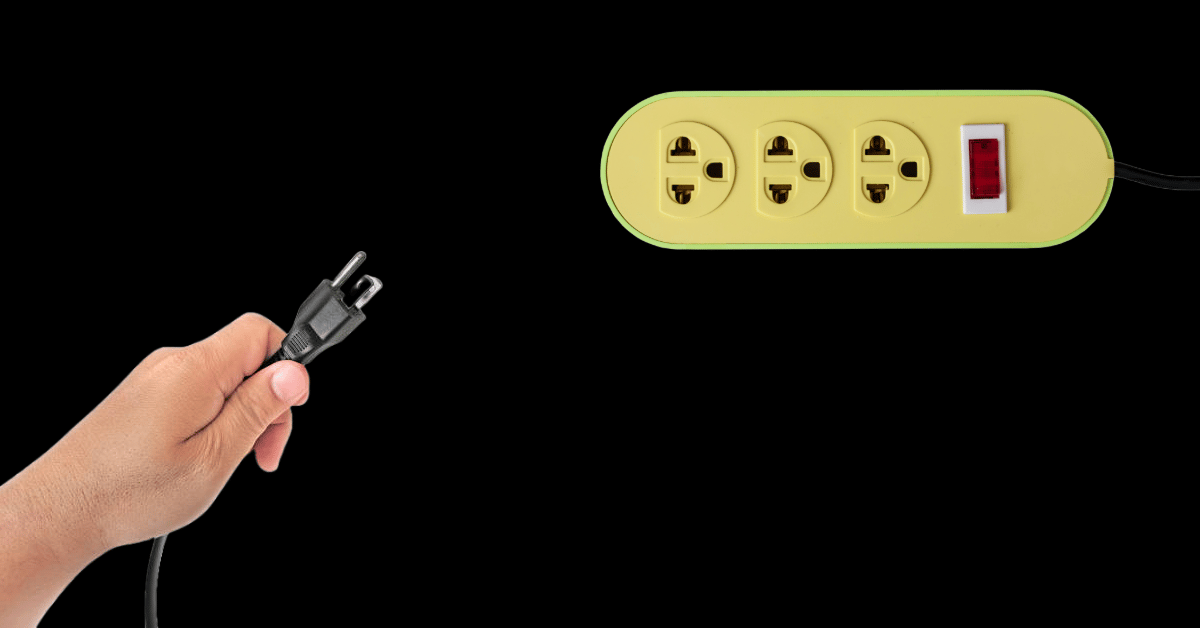
If you're ancient, you owned cassette tapes (it's ok, I'm old, too).
You had a shelf full of movies on VHS. Then came CDs and DVDs. That was, until one day, you could have "1000 songs in your pocket" (thanks to the iPod). And soon after, along came Spotify and Netflix. Over the last 20 years, media ownership has been replaced with media accessibility. Cultural touchpoints used to be made to last. Now, we’re conditioned to transact with and then discard them. So, as a brand, how do you create something that doesn’t just burn bright, then fizzle out?
- Charlotte Ellis, Editor ♡
PRESENTED BY ONSHOUT
Gifting doesn't have to be hard
We've all been there—unwrapped another pair of socks, scented candle, or generic mug—and forced a polite smile.
But what if there was a way to not just get what you'd really like for the holidays, but make buying gifts for others more meaningful, too?
OnShout is a new social wishlist platform that takes the guesswork out of gifting.
Now, it's easy to:
📋Build a wishlist in minutes
🤳🏼Share what you want with friends & family
🎁Contribute to gifts your loved ones actually want, too
No more "thanks, I love it" while inwardly sighing. Gifting just became simple (finally) 👇
WHAT’S HAPPENING IN MARKETING TODAY?
Claude drives a robot dog, AI builds nuclear plants & Google hosts app to help deportations

Anthropic’s Claude takes control of a robot dog.
If you were to look at a growth curve of the speed in which the world is casually making robots designed to fit into our daily lives (warehouse robots, office robots, even home robots), you would also see a parallel curve representing my anxiety about things going terribly wrong. I think the most commonly shared fear is the idea of LLMs hacking into these systems and having a field day. So Anthropic, naturally, decided to see what that looked like… in practise… on a robot dog.
The first time I saw one of these robot dogs was in "Metalhead." This was an episode of Black Mirror where one of these hellhounds relentlessly hunts a human for a gruelling 41 minutes. And when I tell you it put the fear of god in me.
Anyway, in the experiment, appropriately dubbed Project Fetch, researchers fed Claude the robot’s APIs and control interfaces. The LLM basically wrote and debugged the code needed to move the thing around. It handled the annoying parts humans usually get stuck on: connecting to the robot, picking the right libraries and stitching together navigation logic. So, in short, the LLM wasn’t magically embodied; it just coded fast enough to make the robot listen.
Power companies are using AI to build nuclear power plants.
Of courseeee they are. Microsoft and nuclear power company Westinghouse Nuclear want to use AI to “speed up” the construction of new nuclear power plants in the United States. But at this point, it feels like we’re trying to speed run the apocalypse.
A report from AI Now warns that this push could lead to disaster (no sh*t):
“If these initiatives continue to be pursued, their lack of safety may lead not only to catastrophic nuclear consequences, but also to an irreversible distrust within public perception of nuclear technologies that may inhibit the support of the nuclear sector as part of our global decarbonization efforts in the future,” the report said.
Google has chosen a side in Trump's mass deportation effort.
Guess which side it chose. I’ll give you a clue. It is now hosting a Customs and Border Protection app that uses facial recognition to identify immigrants and tells local cops whether to contact ICE about the person. Does that clear it up for you? Ok how about the fact that it’s also been removing apps designed to warn local communities about the presence of ICE officials. Painting a clear enough picture?
The app, called Mobile Identify, allows users to scan someone’s face. Then, it will tell them to contact ICE, and provide a reference number. (Or it will say not to detain the person, depending on the search result.)
-Sophie Randell, Writer
HEY YOU (YES YOU)
Do you want to know how to create a viral content series?
We’re looking for marketing agencies who want to learn how to do big numbers on social—not just for themselves, but for their clients. It’s not unusual for brands we work with to go from 0 to 100,000 followers in a couple months. Right now, we’re taking expressions of interest for our Cohort Intensive Workshop for agencies. Just reply to this email and let us know you’re keen.
DEEP DIVE
We don’t own our culture anymore

Do you own any of the media you consume? Chances are, the answer is no.
You stream music you can’t download. You watch shows that vanish without warning. You scroll feeds that algorithmically decide what lives and what dies. Our cultural memory is now rented, licensed, and ephemeral. The internet is the new Library of Alexandria, and we’re already watching it burn.
For marketers, this is both terrifying and fascinating.
Cultural touchpoints no longer stick around for years, let alone decades.
Campaigns, brand collaborations, even viral content live in a flash before disappearing into the void of expired links, removed posts, and forgotten feeds. Even the brands that built equity by leaning on nostalgia or cultural permanence are starting to feel the squeeze.
How do you anchor your audience to something that might vanish overnight?
There’s also the fact that most humans hate impermanence. And this has given birth to the countermovement: archival obsession, retro tech, and physical media resurgence.
Suddenly, owning culture is a form of rebellion.
Collectors hoard DVDs, vinyl, zines, even cassette tapes, but not like they used to. Now, there’s more purpose than “hey this is a cool relic of the past.”
Even hardcore internet users back up every deleted YouTube video and Tumblr GIF they can find. The Internet Archive is frantically trying to preserve what corporations would rather let slip away. Nostalgia isn’t a marketing lever or nice to have anymore. It’s a survival tactic.
This shift matters because it reveals how much control, or perhaps ownership, has slipped from our hands.
Streaming services, social platforms, and even AI-generated content engines dictate what survives in our cultural ecosystem.
Renting culture breeds literal detachment: you consume, you forget, you move on, you consume, you consume, you consume. There’s no sense of ownership, and without ownership comes a subtle erosion of agency.
For us marketers, this is a warning. Brand loyalty anchored purely in transitory content or fleeting trends is inherently fragile.
Consider the psychology behind the archival impulse. Collecting, preserving, and curating are all about control. It’s why people still buy vinyl or print film and zines in 2025: it’s resistance against a system that says your culture is disposable.
If you understand this tension, you recognise audiences want to hold on, not just scroll past, and therefore have an opportunity to forge deeper connections. Limited editions, tangible experiences, and campaigns that respect permanence start to matter more than ever.
Of course, the question remains: who decides what is remembered?
When HBO Max deletes shows, when music disappears due to licensing lapses, or when an Instagram archive quietly vanishes, the narrative of culture is curated by corporations, not communities. And for marketers trying to tap into cultural relevance, that’s a tricky landscape.
We already know it’s not enough to chase viral trends. But we need to understand what our audience actually values enough to keep.
So, what’s the takeaway for brands and media professionals?
When everything is temporary, owning nothing is a strategic blind spot.
Campaigns need to account for the ephemeral nature of media while also respecting the human desire for permanence. Archiving is defiance. And if you can acknowledge this tension (and maybe even help audiences reclaim some ownership) you can create a form of trust and cultural relevance that no algorithm can erase.
The internet may be burning, but there’s still a chance to save something for tomorrow. And so the question remains: will your brand be the fire or the preservation?
-Sophie Randell, Writer
TREND PLUG
I swear I paid for…

An audio clip of two people having a conversation, ending with one person saying “The f*ck?” is recirculating on TikTok again.
The sound has now turned into a comedic way for people to joke about situations where something unexpected happened to someone they dislike, especially involving exes and secret enemies.
Creators are using the sound to caption relatable instances when you just want to be a little petty and hateful. It’s a playful way to express the karma, revenge, or chaos you want to happen for past relationships or friendships.
The OST follows the format "when your best friend's horrible ex was jumped by two people but you swear you paid for 3” or "when your friend said her bf got locked in a cage with tigers but you remember paying for gorillas". Then, the creator reacts to the scenario by lipsyncing the line, “The f*ck?”
How you can jump on this trend:
Pair the audio with an out-of-pocket moment that connects to your audience or product. Use on-screen text to set up the scenario, then lipsync the line. This trend works especially well for brands with a bold, humorous, or playful voice.
A few examples to get you started:
When my coworker tells me the campaign barely got clicks but I swear I hacked the algorithm
When my boss says the comments on our posts are getting weird but I swear I told my friends to keep it normal
When my coworker says the meeting today got cancelled but I swear I blocked my calendar for the week
-Bella Vlasich, Intern
ASK THE EDITOR

How should a local small business think about getting more leads? -Erin
Hey Erin,
Our founder, Stanley Henry, talks about this concept called the 5 stages of attention. The idea is that, depending on where you are in your business journey, you will be doing different things to build brand awareness. Sounds like you're a small business, so according to this framework, you should work on building your network in person as much as possible. Go to industry events, networking groups, and get your business in front of people. It's only when you have absolutely exhausted all of these avenues that you should worry about building a social media presence.
Especially since you're looking for local leads, your network is the ideal place to build awareness about your business. If you have the budget, you could also look at running some paid ads to bring in leads. But these shouldn't be your only strategy! You need to do other brand-building activities like I mentioned above so when people see your ads, they already are aware of who you are and what you do!
- Charlotte Ellis, Editor ♡

